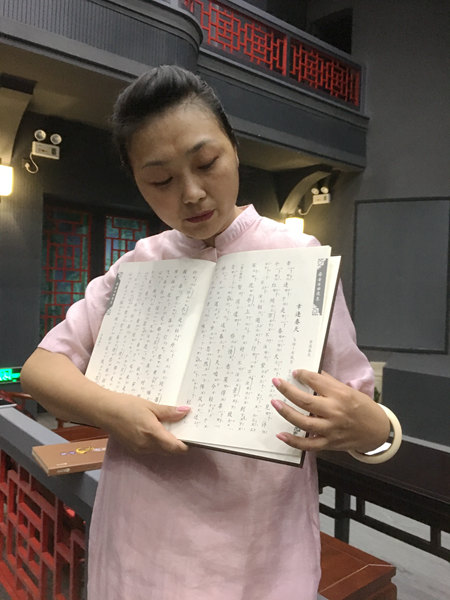 |
|
A musician shows off a book of musical scores of Nanyin, a traditional music genre that still uses the gongchepu method. WANG KAIHAO/CHINA DAILY |
Guido of Arezzo, a music theorist in medieval Italy, devised the music notation system, which laid the foundation of Western music. And half way around the world in China, musicians also recorded their music in their own system, called gongchepu, dating to the Tang Dynasty (618-907).
By using 10 Chinese characters to represent musical notes, similar to do-re-mi, gongchepu was widely used to record music, such as songs of traditional Chinese operas.
On Sept 5, a series of books, called the China Gongchepu Collection, which documents old songs recorded in the old Chinese music system, was published by the Art and Culture Publishing House, the Ministry of Culture says.
The series, edited by the Music Institute of the Chinese National Academy of Arts, comprises 10 books based on different regions, including Beijing and Hebei, Shaanxi and Jiangsu provinces.
According to Ming Wenjun, deputy director of the arts department at the Ministry of Culture, the project to publish the series was launched in 2010.
Before the China Gongchepu Collection, the Ministry of Culture initiated two publishing projects about ancient Chinese music - one on traditional Chinese music instruments and the other on music scores of guqin (a Chinese seven-stringed zither).